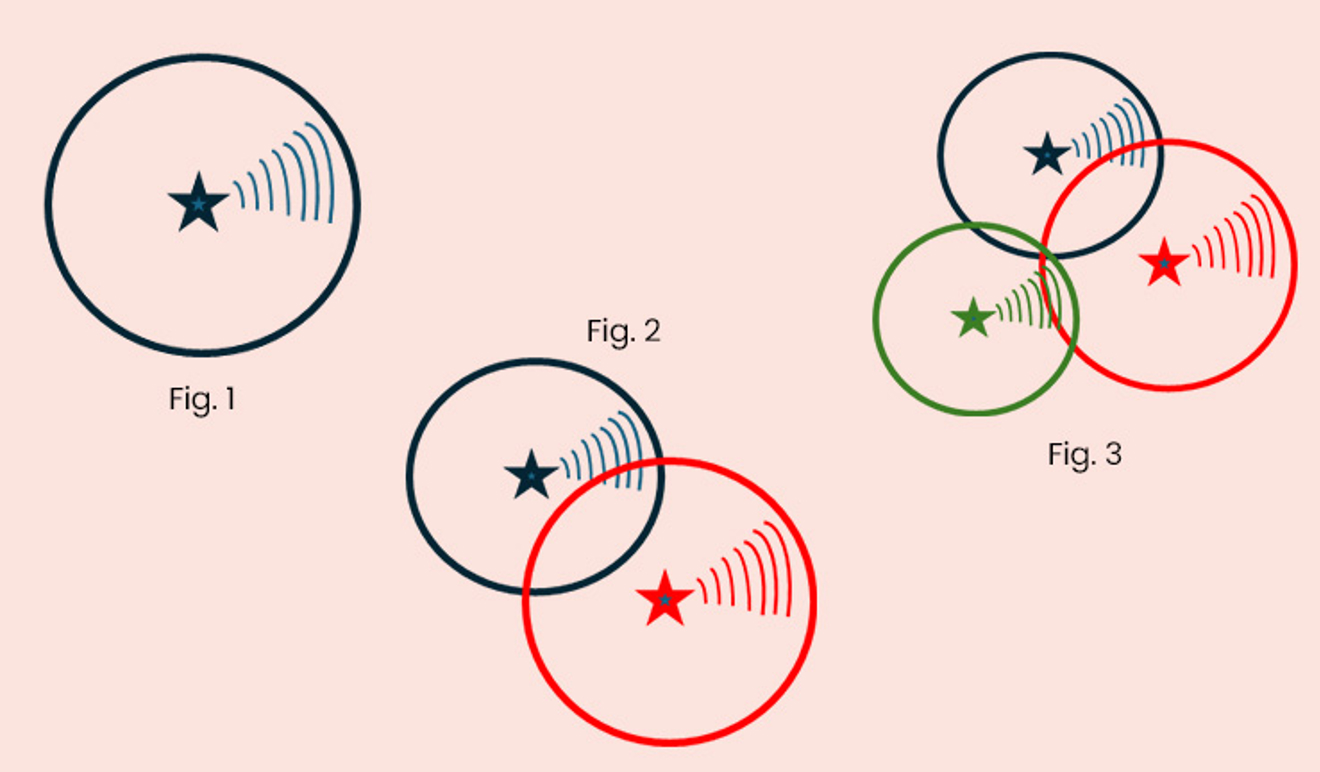24 March 2025
eNavigation: Eyes in the sky
We explain how satellites aid boating communications
Leading up to the withdrawal of Admiralty charts, we go back to basics and explain what Global Navigation Satellite Systems (GNSS) are and how they feed into our electronic chart systems (ECS).
We use satellites for a huge number of applications, from communications, location services and safety systems to TV channels. In the maritime field they provide long-range communications needed to calculate location, speed and course over the ground, receive and deliver distress messages from EPIRBs & PLBs and, in more recent times, offer long-range internet connections.
The various satellite groups are divided into three main categories according to their altitude:
GEO (Geosynchronous or Geostationary Earth Orbit)
As the name suggests, these satellites appear stationary. Technically they’re orbiting the earth but are at a great altitude (around 36,000km) so their speed matches that of the earth. This means they have the same ‘footprint’ on the earth’s surface – the ground area that the satellite covers – at all times. Between them, they cover most of the earth’s surface 24 hours a day. However, they have a permanent blind spot in the polar regions. We use GEO satellites for distress messaging and for GNSS Satellite Based Augmentation Systems (SBAS).
MEO (Medium Earth Orbit)
These constellations are from 19–23,000km above the earth and have an orbit time of around 12 hours. It’s at this altitude we find our GNSS satellites. In recent years the COSPAS SARSAT system, which receives and delivers distress messages from EPIRBs and PLBs, has also been using more MEO satellites. Once fully functional this system will mean complete global coverage and almost real-time beacon detection.
LEO (Low Earth Orbit)
These satellites are the closest to the earth’s surface, with an altitude of around 300–500km. This is where we find the International Space Station. LEO satellites are mainly used for communication and have the smallest footprint on the earth’s surface at any one time.
GNSS satellites
The GNSS satellites are made up of four main constellation systems. Historically we’d have had to buy a different receiver for each system, limiting the number of satellites we could use. However, in recent years, we’ve been able to use multiple GNSS constellations, which increases the likelihood of having enough satellites in view to create an accurate position.
The four systems are operated by different countries – GPS by USA, Glonass by Russia, Galileo by Europe and BeiDou operated by China.
Pinpoint location
Each satellite transmits a signal to a receiver which calculates its distance from that satellite. This gives a large circle of possible locations. With more satellites it reduces the number of possibilities.
To explain this further, we can think of the satellite transmission as a sound signal, and the satellite as a lighthouse making the sound. We could calculate a distance from the lighthouse if we knew the time it made the sound and the time we heard the sound. But the satellite is also moving, so we need to know where it was when it transmitted. The signal broadcast by the satellite contains very accurate information about both. In the panel opposite we illustrate how the communications work.

Satellite communication explained
Working from the lighthouse analogy, at 1200 a sound is made from the blue lighthouse (the star in Fig. 1). We hear the sound 15 seconds later as sound travels approximately one mile every five seconds. This means we could be anywhere three miles from the lighthouse – the blue circle.
In Fig. 2 the red lighthouse also makes a sound, which takes 20 seconds to reach us. This gives us a range of four miles from the red lighthouse – the red circle. The two points where the blue and red circles cross are our two possible locations.
The green lighthouse makes a sound that takes ten seconds to arrive; this puts us two miles away from the green lighthouse – the green circle. Where all three circles cross is where we are. GNSS uses this general principle with electro- magnetic signals of around 1.6GHz to create the position circles.
We need at least four satellites in clear view of our receiver to create a horizontal position, i.e. latitude and longitude. The more widely spread these satellites are, the more accurate the position fix will likely be.
Article first shared to members in the Winter 2024 edition of RYA magazine.
